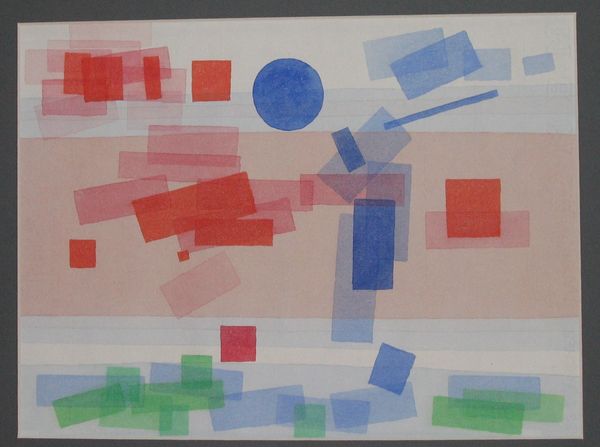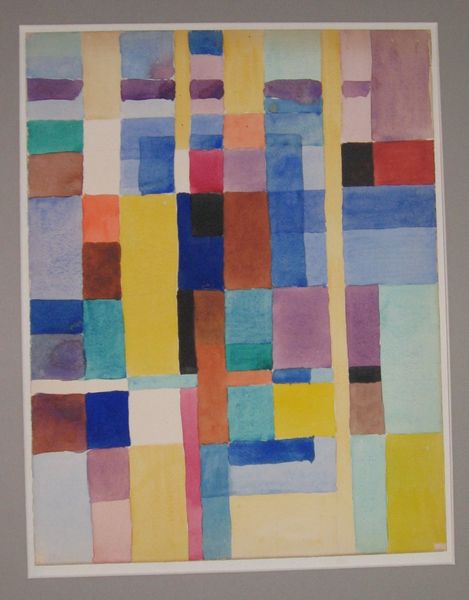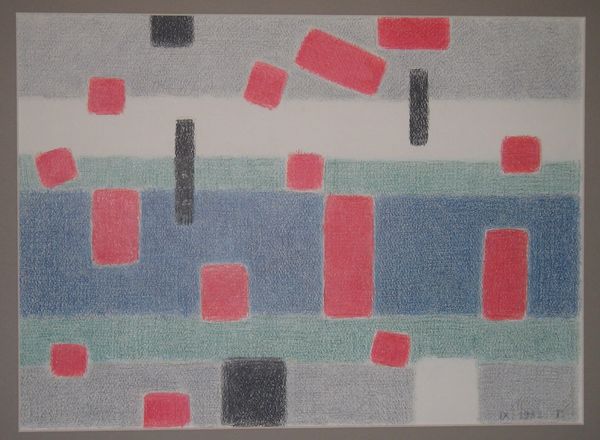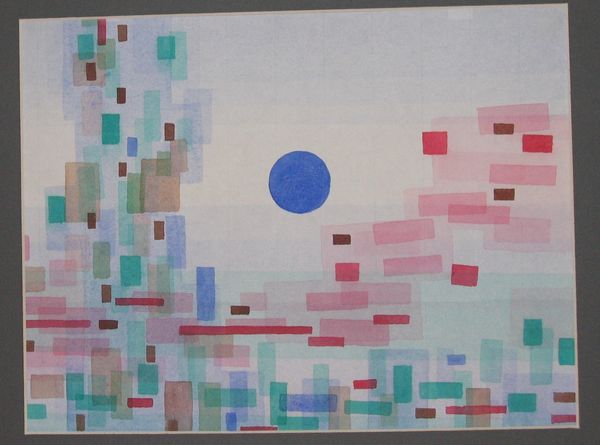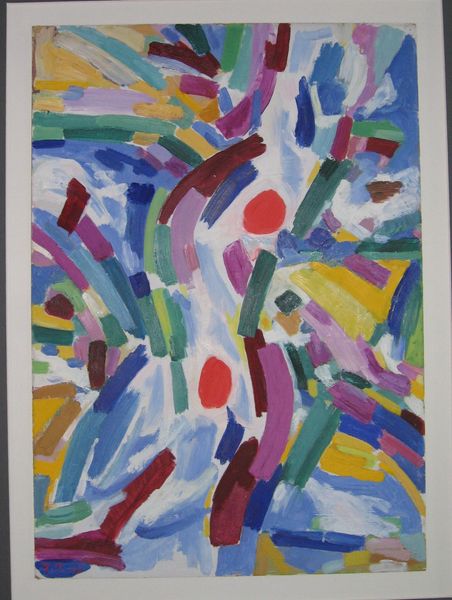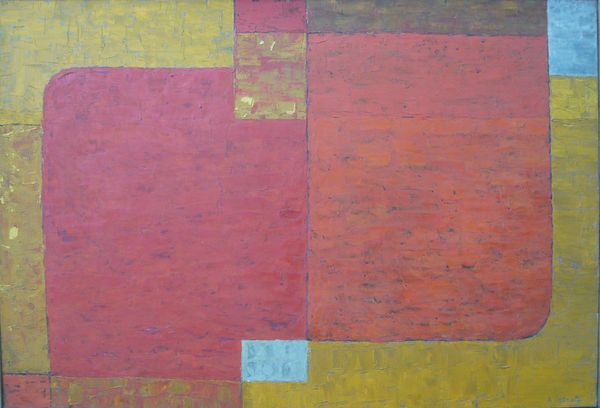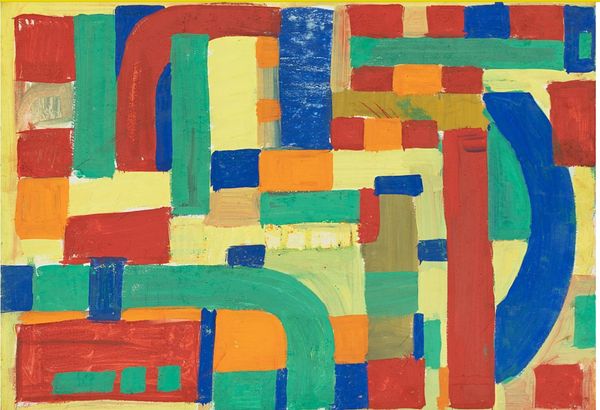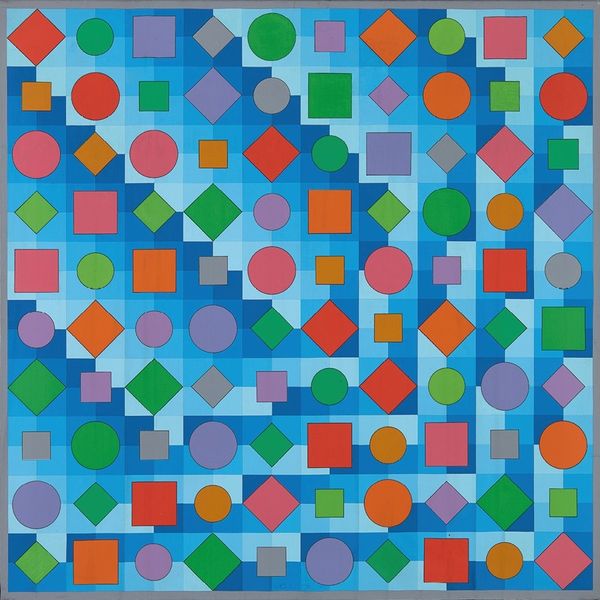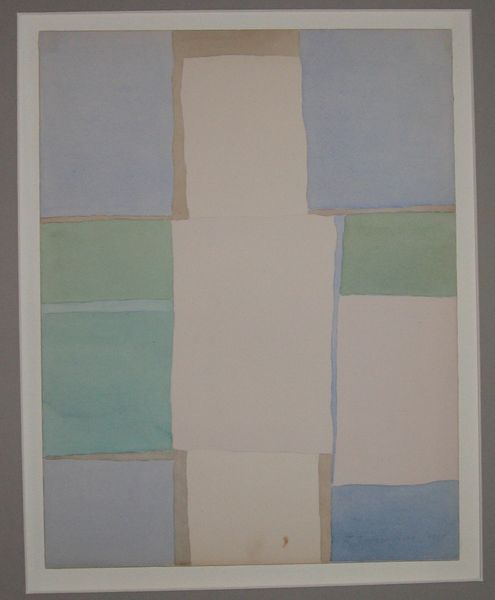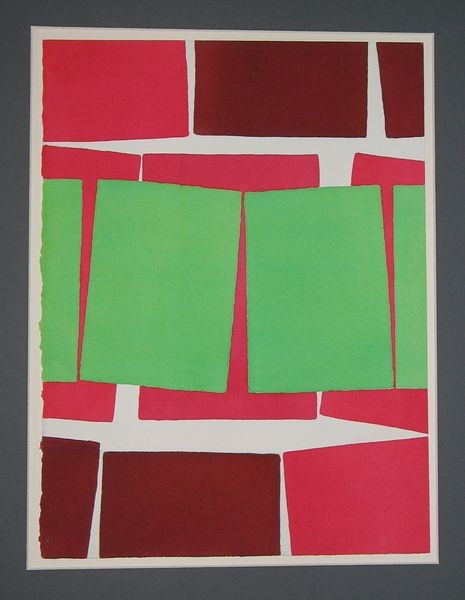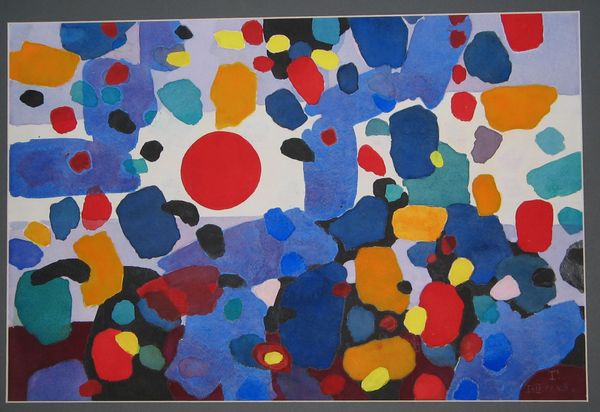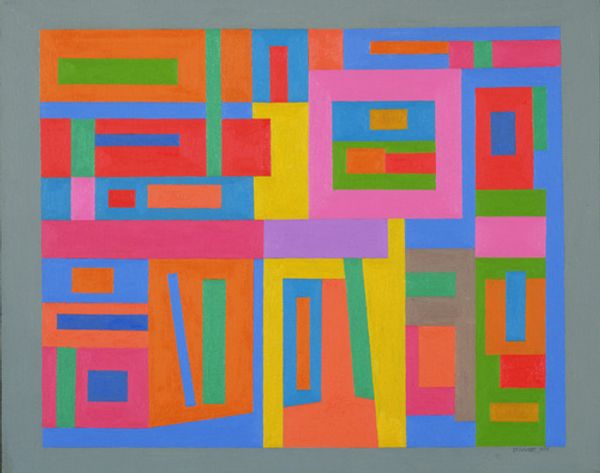
Copyright: Hryhorii Havrylenko,Fair Use
Curator: Welcome, let's turn our attention to Hryhorii Havrylenko's "Composition," created in 1981. It’s a watercolor painting currently held in a private collection. What’s your initial reaction to it? Editor: It strikes me as playful yet orderly, almost like an aerial view of some abstract, perhaps even utopian, community planning with carefully positioned buildings. It’s visually calming, too. Curator: I find that reading Havrylenko's abstract art through the lens of socialist realism, a dominant style during his time in Soviet Ukraine, is very interesting. Though this work seems far removed, one could see a critique of uniformity, and perhaps a covert nod to the suppression of individuality. Editor: Perhaps, but I’m also curious about the labor involved in producing what seems at first glance a simple image. The way the watercolor bleeds slightly around each shape hints at the handmade quality. There's a real contrast between the mechanical shapes and the fluid material. Curator: The limited palette is important here, I think. The shades of green and blue, divided horizontally, create two distinct visual fields occupied by red, yellow and white shapes. How do these decisions affect the way we experience this composition? Does it evoke particular feelings or memories? Editor: I wonder if the choice of watercolor itself has significance, given its accessibility and its long association with craft rather than "high art". Is Havrylenko using an available material to circumvent some social barriers? The pattern evokes textile work and repetitive actions of production as much as urbanism. Curator: Indeed, perhaps the act of creation itself becomes a statement, and its availability means it democratizes art by enabling viewers to engage not just with what is represented but with how it's made. Editor: Absolutely. Looking closely, the irregularity of the shapes adds another layer. They're not perfect rectangles but rather suggest cut-outs, bringing forth a certain intimacy and even imperfection within the structure. Considering process and materiality together helps to re-evaluate our presumptions around value and meaning within seemingly simple objects. Curator: Thanks, that was a great summary! This really emphasizes how understanding production informs interpretation. Editor: Indeed. This image initially struck me with calm yet offers surprising depth with thoughtful insight.
Comments
No comments
Be the first to comment and join the conversation on the ultimate creative platform.
